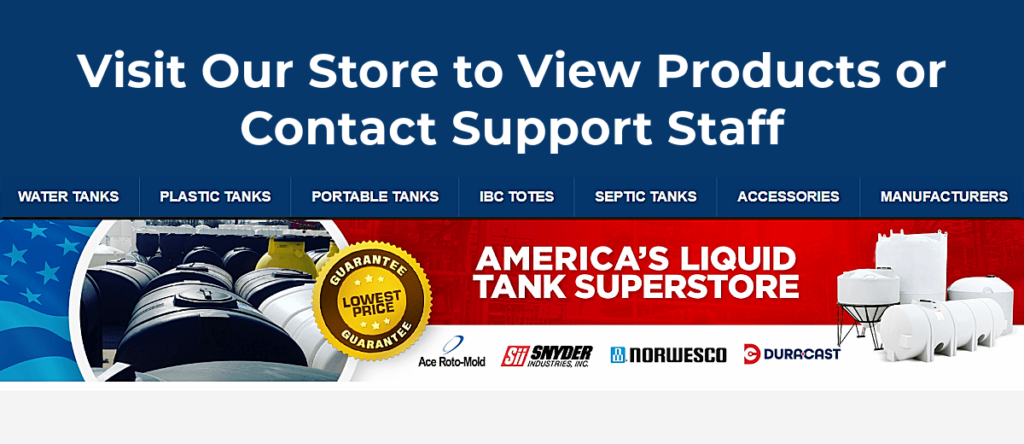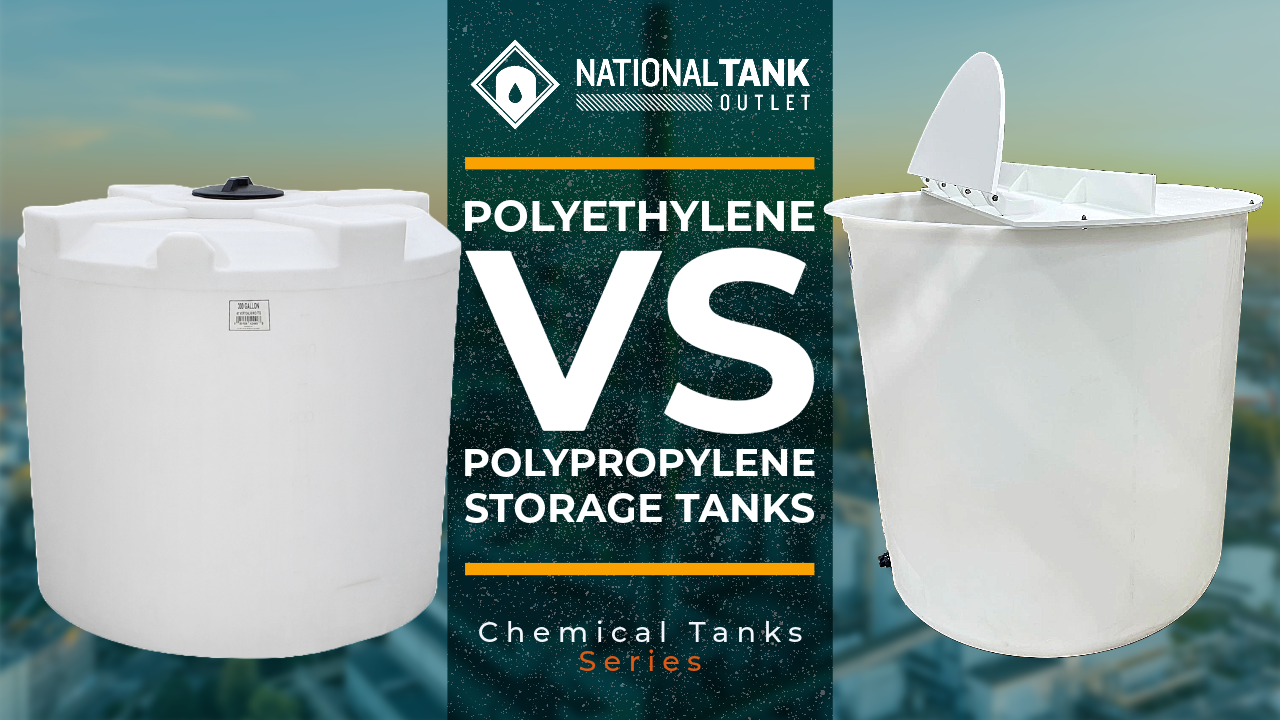
For industries, new businesses, and procurement teams, it’s important to choose the correct storage tank and the right storage tank material. The right product will ensure the container will meet the service life, cost, and performance requirements that are needed by the company’s application and the cargo the tank will handle.
Chemical storage tanks are available in several different material options including polyethylene, polypropylene, fiberglass, stainless steel, carbon steel, and titanium. The first materials on this list, polyethylene (PE) and polypropylene (PP), rank among the top of the most common manufacturing materials used to produce storage tanks, particularly those used in chemical handling.
In this overview guide, we will compare the similarities, differences, pros and cons, and other important points when comparing and trying to decide between PE or PP storage tanks.
Comparing Polyethylene and Polypropylene
Similarities:
- Polymer Origin: Both PE and PP are synthetic plastic materials. Both materials are made from the polymerization of base monomer units derived from petroleum products. This means PE and PP share a similar origin, similar chemical structure, and a similar capability to serve as a stable material for a storage tank.
- Durability: PE and PP are both known and trusted for their physical and chemical durability that improves their useful life and makes them ideal for applications that require resilience and reliability.
- Chemical Resistance: Both materials are resistant to a wide range of chemicals and compounds. Their chemical resistance makes both PE and PP suitable for handling many different commodities and therefore makes them highly versatile and capable of meeting various industry needs. Chemical compatibility is always of utmost importance to verify prior to selecting a storage container.

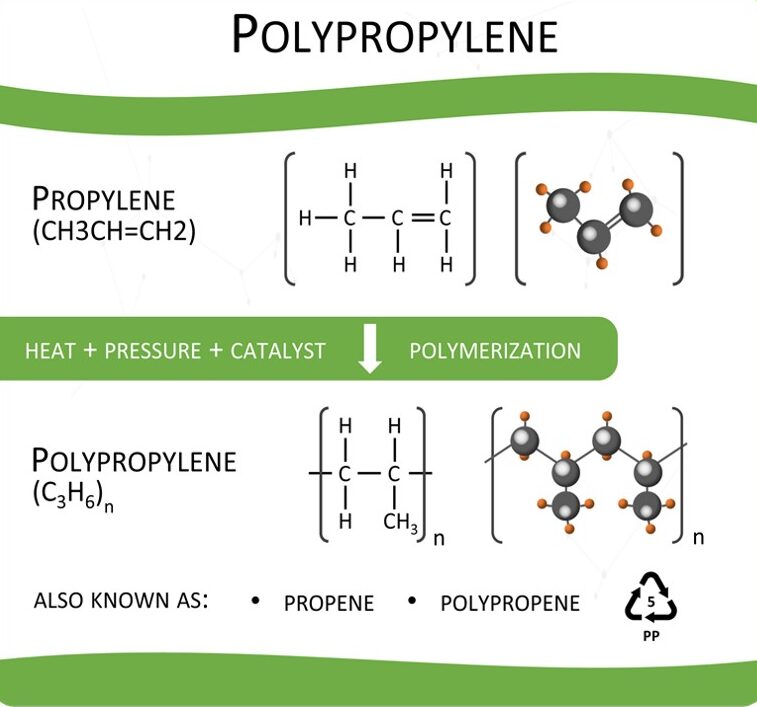
Differences:
- Raw Material: Polyethylene is derived from the polymerization of base ethylene monomers while polypropylene from propylene monomers. These different raw materials account for the differences between PE and PP characteristics and properties.
- Chain Structure: Polyethylene has a shorter chain length, compared to PP, that improves its flexibility and resistance to impact and stress. PE polymers also do not have branching. This results in a high degree of crystallinity that makes PE denser with excellent tensile strength and durability. Polypropylene exhibits a more complex structure and asymmetrical chain structure that results in less crystallinity yet improved resistance to higher temperatures.
- Weight: While both PP and PE are considered lightweight materials, polypropylene is somewhat lighter on average compared to polyethylene. The specific gravity of PP is approximately 0.90 g/cm3, while PE varies between 0.91 to 0.96 g/cm3 depending on PE’s density, either low, medium, or high density.
- Rigidity: Polypropylene is known for its rigidity and resistance to flexing (flexural stress), making PP generally more rigid than PE and perhaps better suited to applications that require a firm, sturdy material. Polyethylene, on the other hand, tends to be less rigid than PP. This lower rigidity provides a higher degree of flexibility that actually makes PE more resilient to impact and stress cracking.
- Temperature Resistance: Polypropylene has higher temperature resistance compared to polyethylene, making PP a better choice for applications that require higher temperatures. Generally, polypropylene can handle temperatures 100°F greater than polyethylene.
- Volume: PE tanks tend to have a higher total volume capacity range compared to PP tanks. Polyethylene tanks often range up to 20,000 gallons, while polypropylene tanks may only range up to a few hundred gallons.
- Tank Style: Polyethylene tanks are available in many different engineered styles to match design with application benefits and needs. Polypropylene tanks are frequently limited to cylindrical and rectangular vertical tanks, with open top tanks being the most common.
- Color: PP is naturally white in color with limited options for different colors. PE also is naturally white but often has different color options.
PE vs PP | Pros and Cons:
Polyethylene Tanks:
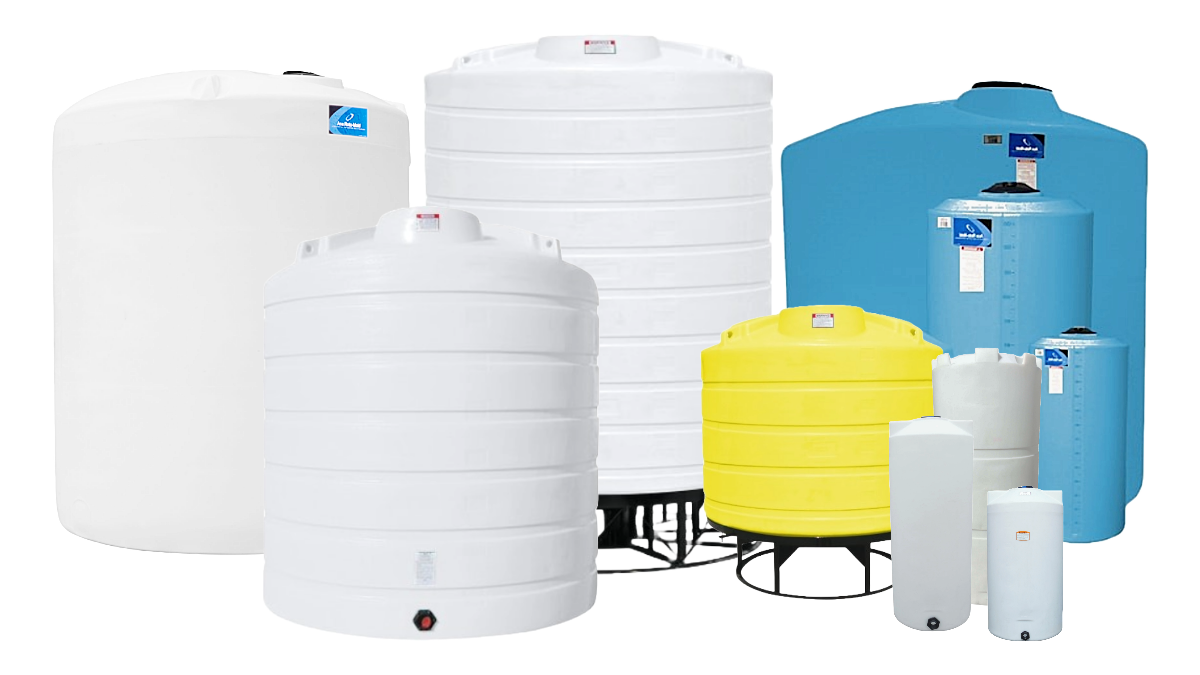
Pros:
- Flexibility: Due to their flexibility, PE tanks are less likely to crack or break and hold up over long term use.
- Versatility: PE tanks offer versatility and capability of handling a wide range of temperatures and chemical exposures.
- Durability: PE tanks are extremely durable, resistant to impact, and less likely to crack under stress.
- Chemical Resistance: Polyethylene tanks exhibit excellent resistance to a wide variety of chemicals, making them ideal for storing various business materials.
- Temperature Tolerance: PE tanks’ suitable temperature ranges can span from -40°F to 100°F.
- Cost-Effective: Polyethylene built storage tanks are generally cheaper than polypropylene.
Cons:
- High Temperature Sensitivity: PE tanks are not suitable for constant high-temperature applications in excess of 100°F, limiting their use for certain industries and applications.
- Lower Rigidity: PE tanks are less rigid than PP tanks, which may limit their use in certain applications.
- Lower Abrasion Resistance: PE tanks have less resistance to abrasion and certain abrasive acids compared to polypropylene.
- UV Degradation: Polyethylene is susceptible to damage from ultraviolet energy, such as from sunlight, and prolonged exposure can cause PE tanks to degrade over time. Most modern PE tanks include UV stabilizing agents to protect the tank against UV damage and prolong its lifespan.
Polypropylene Tanks:
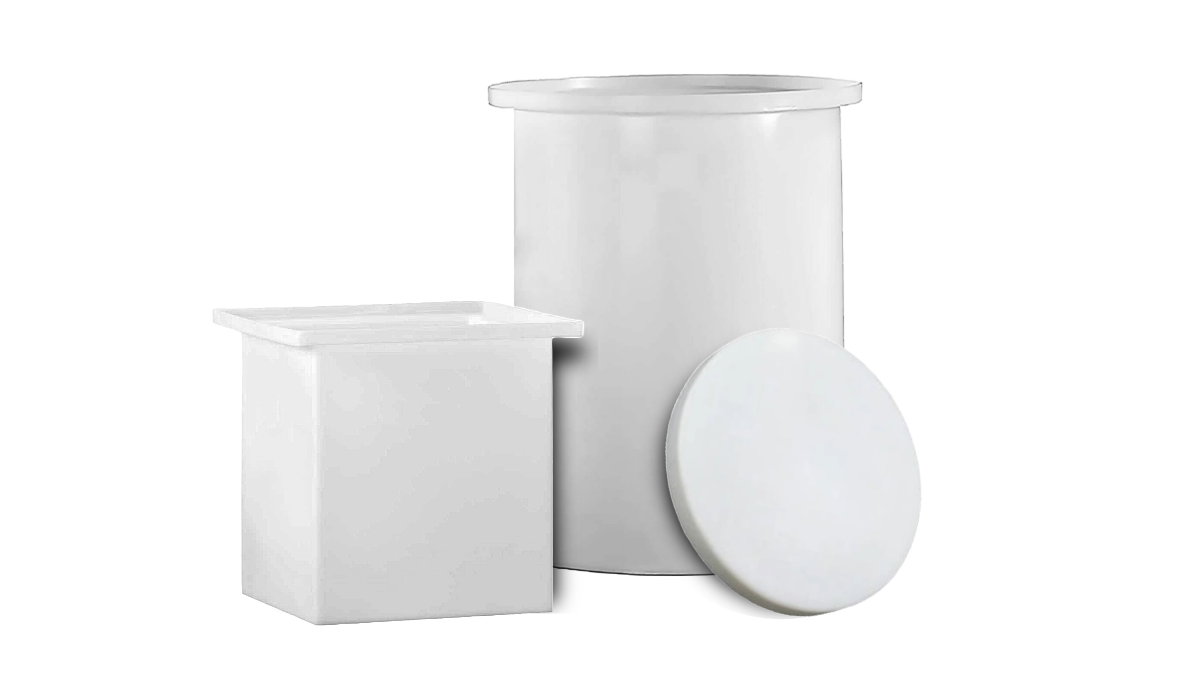
Pros:
- High Temperature Resistance: Polypropylene tanks can withstand high temperatures up to 212°F, making PP tanks the preferred choice for applications requiring elevated temperatures.
- Rigidity: Polypropylene tanks offer greater rigidity compared to PE tanks that can make them more suitable for applications that require a firm and sturdy material.
- Chemical Resistance: Like polyethylene, PP also exhibits excellent chemical resistance.
- Abrasion Resistance: Polypropylene storage tanks have improved resistance to abrasion and certain abrasive acids that help protect the tank from damage.
Cons:
- Cost: Polypropylene tanks tend to be more expensive than PE tanks.
- Brittleness: While PP is more rigid, it can also become more brittle and susceptible to damage, especially at low temperatures.
- Sensitivity to Low Temperatures: Polypropylene has a fairly low, minimum temperature threshold of -4°F to 14°F. This means polypropylene tanks are not recommended for use or handling liquids around or below -4°F to 14°F. Temperatures below these thresholds greatly increase PP brittleness and the possibility for fracturing and cracking.
- UV Sensitivity: Similar to polyethylene, polypropylene has sensitivity to ultraviolet sunlight energy which can lead to plastic degradation over time, especially if kept in a location, such as outside, where regular exposure occurs. Also similarly to PE, PP storage tanks often include UV stabilizers to protect against sunlight damage.
Additional Considerations:
- Cost Comparison: While end-costs will vary based on size and additional features, in general polyethylene tanks are often cheaper than polypropylene tanks.
- Environmental Impact: Both PE and PP can be recyclable at the end of their service life. However, their total environmental footprint must also consider the energy used in their production and any potential environmental hazards during disposal.
- Maintenance Requirements: Both tank types require routine cleaning and inspection. However, polypropylene tanks may need closer monitoring for cracks or damages due to its higher rigidity and the specifics of the application.
- Specific Use Cases: If storage requirements involve elevated service temperatures, polypropylene would be the preferred choice. For overall flexibility and low temperature resistance, polyethylene would be more suitable.
- Life Span: On average, both PE and PP tanks can last for many years. The exact lifespan of a poly tank will depend on use, maintenance, and environmental conditions.
- Industry Standards and Regulations: Both PE and PP tanks are manufactured to meet current industry standards and regulations for storage tanks to ensure compliance and safety.
Takeaway
Both polyethylene and polypropylene storage tanks offer unique advantages and limitations. Which tank and material option is best will depend on the specific application and work case. When needing higher temperature and abrasion resistance, as is ideal for many plating applications, polypropylene tanks are often the best choice. For most other applications, polyethylene tanks are traditionally chosen for the benefits, versatility, lower cost, and overall durability. When comparing polyethylene versus polypropylene tanks, always evaluate the exact needs, budget, and requirements of your use to make an informed choice on the option that will best suit your application.
For assistance, inquiries, or personal company quotes, such as for custom fabricated plastic tanks, visit our store to view products or contact our support team.
